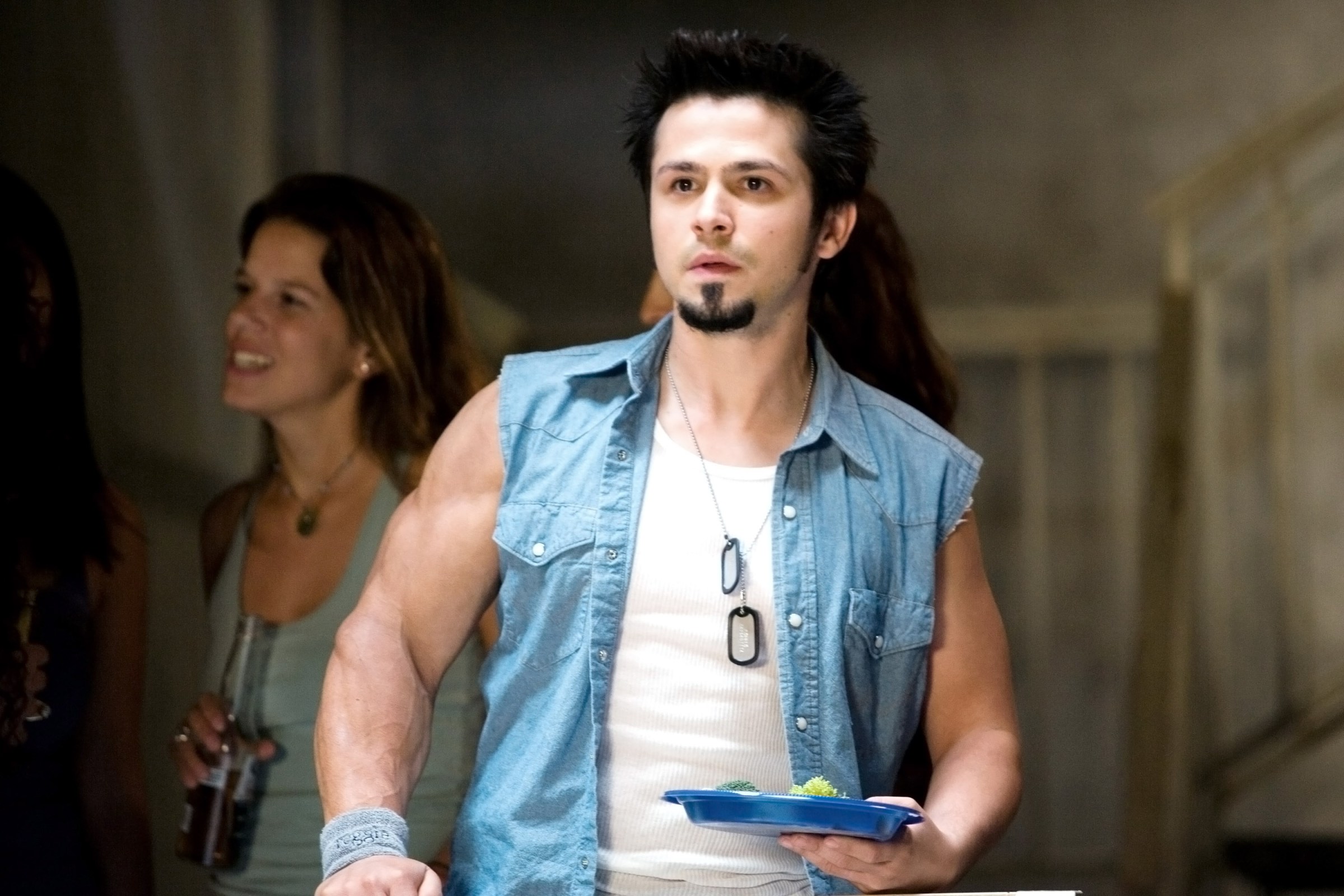After critical and commercial success with a trio of smart, entertaining, and impeccably crafted genre films, M. Night Shyamalan seemed on top of the world. The Sixth Sense, Unbreakable, and Signs thrilled audiences and critics alike, setting the director up as a major new player in Hollywood. Then prowled The Village — a box-office success, but one that received largely negative reviews and changed Shyamalan’s public reputation overnight to that of a twist-reliant fraud.
The Village didn’t deserve that, and neither did Shyamalan. But that response marked a significant change in the filmmaker’s approach. You can see it happen in real time with Lady in the Water, another widely lambasted Shyamalan film that, I’ll say it, does not deserve the reputation it has. It’s a movie that directly reckons with our culture’s cynicism toward sincerity in art, literally depicting the director grappling with these ideas himself. It’s a wonderfully shot, achingly earnest movie that helps tie together the various strands of Shyamalan’s career. Ultimately, Lady in the Water paved the way for the director to move into his more knowingly goofy genre projects executed at a high level, like Trap.
A fairy tale set in modern Philadelphia, Lady in the Water follows various residents of an apartment complex who are each visited by a water nymph (Bryce Dallas Howard). The nymph, named Story, seeks the help of the superintendent (Paul Giamatti) and the residents to return to her home, the Blue World. She is being hunted by a wolf-like creature, and the residents — and the stories they tell — may be her only hope of escape. Gorgeously photographed by frequent Wong Kar-wai collaborator Christopher Doyle (In the Mood for Love, Chungking Express), it’s an uneven film but a frequently beautiful one, as Doyle’s photography and Shyamalan’s assured direction combine to make the apartment complex feel at once teeming with regular, everyday life and like a portal to another world.
The idea for Lady in the Water started as a fairy tale Shyamalan told to his children, and in some ways it’s his own Hugo — a movie made by a filmmaker who typically makes very adult fare, finally making one his kids could watch, too. And fairy tales turn out to be a perfect fit for Shyamalan’s approach to storytelling: It lets him access big emotions, and write directly about the problems he’s thinking about rather than dress them up with metaphors. It’s a story about storytelling in all its forms — literal story writing, in the case of one character, but also the stories we tell about who we are and the stories that connect the communities we live in.
In the tradition of many bedtime stories including self-insert characters as a way to work toward the moral, Shyamalan himself plays Vick Ran, a writer in the building who is struggling to finish his novel. Vick Ran’s relationship with Story helps him get over his anxiety about his work and embrace his own ideas, free from the cynicism of the world. This relationship to cynicism in art criticism is also somewhat clumsily represented by the character of Harry Farber (Bob Balaban), a crotchety film critic who is constantly giving bad advice and being kind of a jerk.
Critics’ reactions to The Village almost certainly influenced the characters of Vick Ran and Harry Farber in Lady in the Water. A character says it pretty plainly: “How could anyone be so arrogant as to assume they know another person’s intentions?” And in the press cycle for the movie, Shyamalan himself said, “These movies are so clouded by expectations that it can be damaging to you as an artist. What you think may be the critical response to my movies is very different from the reality. […] It’s that aspiring to something higher that always gets everyone all riled up.”
You can see Shyamalan working through this in real time in Lady in the Water, behind the camera and in front of it. He’s bitter about the way The Village was received, to be sure — in a crucial plot point, Balaban’s critic character completely misunderstands the movie he’s in, nearly causing Story’s death — but there’s more happening here than just that: Shyamalan is also explicitly investigating why sincerity is so important to him as an artist and as a person, through his own writer character but also through Story, a naive young person unfamiliar with the hard edges of our world who doesn’t bow to the temptation of cynicism.
Lady in the Water signals an evolution of a generational filmmaker into his next form, and as a result it feels like an act of artistic catharsis. The reaction to The Village and the process of working on Lady in the Water clearly inspired Shyamalan to lean into what he values in his art, rather than chasing the approval of critics. It started a run of goofy-ass movies executed at a high level, which has become his hallmark: the beach that makes you old, what if your grandparents were evil, a fake concert to entrap a serial killer.
That goofiness is on full display in Lady in the Water — you have your narrative about how stories can change the world, told through a nymph named Story, sure, but there’s also a man (Freddy Rodriguez) who only works out one of his biceps (pure gold). At the heart of the goofiness is an undying sincerity. What better fit for that than a fairy tale, a form built on the kind of metaphor Shyamalan loves to play with? That sincerity is the core of Shyamalan’s approach, and modern audiences’ discomfort with sincerity in goofy-seeming movies has led to a general misunderstanding of his work.
In an interview with Variety after the release of Old, Shyamalan addressed this head-on.
“I think about this a lot. It’s very dangerous to say, ‘I love you.’ But you’re guaranteed to win if you say, ‘Back that ass up,’” the Oscar-nominated filmmaker told Variety. “Everyone laughs, you’re a great writer. That was funny.” But say ‘I love you,’ and Shyamalan says the response is: “You suck! This stinks, man!”
Shyamalan continues, “I think we’ve built up so many defense mechanisms that it feels childlike or naïve to be sincere.”
Lady in the Water isn’t in the top tier of Shyamalan’s oeuvre. The man is one of the most skilled image makers and storytellers of his generation, and he’s made too many bangers for that. But it’s not the disaster many painted it out to be, and it’s crucial to understanding the journey of one of the century’s most important Hollywood filmmakers. Shyamalan (and his character in Lady in the Water) made a conscious choice to make stories for himself rather than chasing the approval of others, trusting the audience will follow. They did, and that’s a lesson all of us could learn from.
Lady in the Water is available for digital rental or purchase on Amazon and Apple TV.



